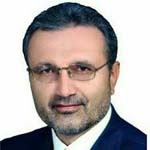Analyzing the Accessibility of the Light Rail Transit System to Health Services of Hospitals in Mashhad Metropolis
Today, one of the important issues in urban areas is accessibility. Accessibility is defined as the ability to achieve a variety of activities and services within a reasonable time. This concept is highly dependent on the city's spatial form, access network, type of travel and form of travel, and it is determined by the land use pattern, the nature of the transportation system, and the characteristics of travelers. Of the various transportation options, public transportation is a key component of sustainable transport system. To have a better performance, it should provide access to the core services and activities safely for different classes. In this respect, the present study intends to investigate the role of the light rail transit (LRT) system in Mashhad in accessible hospitals as the main type of health care services. To meet the goals of the study, the questions raised are as follows:
How is the spatial distribution of income groups in urban districts of Mashhad?
How is the shortest distance traveled by the income groups of the districts to the nearest LRT station?
How can access to urban hospitals be made more equitable through LRT for the groups in the all city districts?
Review of Literature
The easiest definition of accessibility is how easy to achieve a specific location. A strong aspect of the concept of accessibility is that it combines land-use and transportation-related features in a simple and unique criterion. Meanwhile, transportation is considered as a tool for having attractive destinations and the location of attractions determines that people use transportation to reach their destinations. If gravity position is close to a place where public transportation is more accessible than private transportation, it is more likely that people will travel through public transportation. In addition, if land use density is higher than public transportation, performance would be more durable in that area. Furthermore, it is usually accepted that encouraging more public transportation than cars and promoting high density land use can help to maintain a more sustainable environment.
The research method is of descriptive-analytic type. The necessary data have been collected using library methods, documents and GIS. The statistical population of the study is the population of all income groups of the Mashhad metropolis distributed in 43 districts of the municipality. The statistical population of the study is the population of all income groups of the Mashhad metropolis dispersed in 43 districts of the municipality. In order to analyze the data, the network analysis was used in the GIS package and the Hansen's Access Model (Formula 1).
The income groups of Mashhad are classified under five classes of very low to high income, which are dispersed in 43 urban districts. Nearly 50% of the population of the Mashhad metropolitan is in low to moderate income groups. The largest group is the middle income group with 27.49% of the total population of the city, while the smallest is the very high income group with 11.46% of the total urban population.
In general, 68.97% of the total population of the city, which are located in 32 municipalities, ranges from very low to moderate distances of LRT stations (0-600 meters), mostly including the middle income group (more than 40% of the population of this group in short and very short distances) and very low income group (more than 55% of the population in the middle distance) respectively. Of the total population of city, 31.03% are located at a very large distance (601 - +800 meters) of the nearest LRT stations, which are mostly included in the middle income group.
The measurement of the spatial accessibility of areas to hospitals through LRT shows that of 43 municipal districts, 13 districts (30.23%) have moderate to very high access, whereas the LRT routes and the concentrate of hospitals (mostly with high stretch degrees) are seen as possibly close and there is less distance to reach the hospitals. Access is lower than the average in 30 districts (69.77%). The assessment of access scores based on income groups also shows that generally only 22.25% of the total urban population has moderate to very high access, which mostly includes a moderate and high income groups. While 77.65% of the population is at low and very low levels of access to hospitals, most of them include high and very low income groups.
As for considering fair space accessibility to hospitals as the most important health care services for all income groups of the community, findings of the research indicate that the existing and predicted LRT system is ineffective. Thus, the spatial imbalance of access could be seen among the population of each income group. In order to improve the performance of this system in terms of more equitable access to hospital health services, some suggestions are made in the following:
The distance to LRT system for those districts and income groups that are far from the system should be expanded through the forecasting and launching of new routes (in addition to the current 4 routes) so that communication with the hospitals within the city will be fairer for its inhabitants.
Hospitals with a low degree of stretch should also be added to their capacity if possible, and also be adjacent to the four LRT routes.
If there are plans for the construction of new hospitals in the field of their location, special attention should be paid to the existing infrastructure (Line 1 and Phase I of line 2) and the predicted infrastructure of LRT (Phase II line 2, line 3 and line 4).
- حق عضویت دریافتی صرف حمایت از نشریات عضو و نگهداری، تکمیل و توسعه مگیران میشود.
- پرداخت حق اشتراک و دانلود مقالات اجازه بازنشر آن در سایر رسانههای چاپی و دیجیتال را به کاربر نمیدهد.


